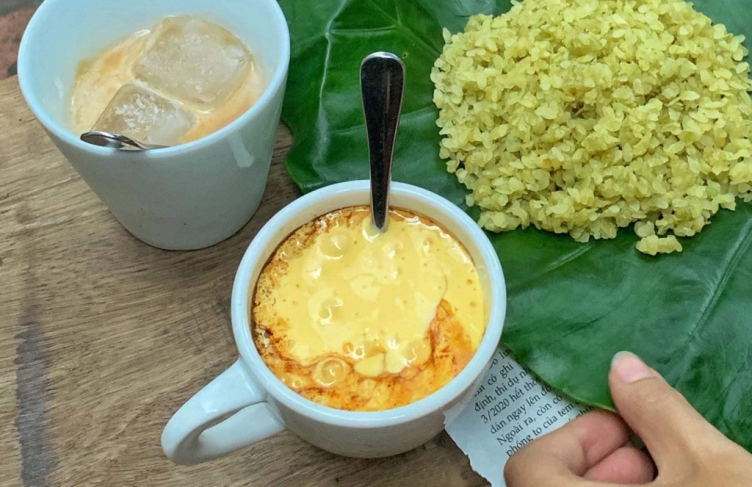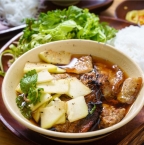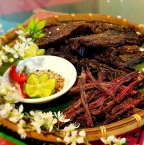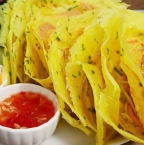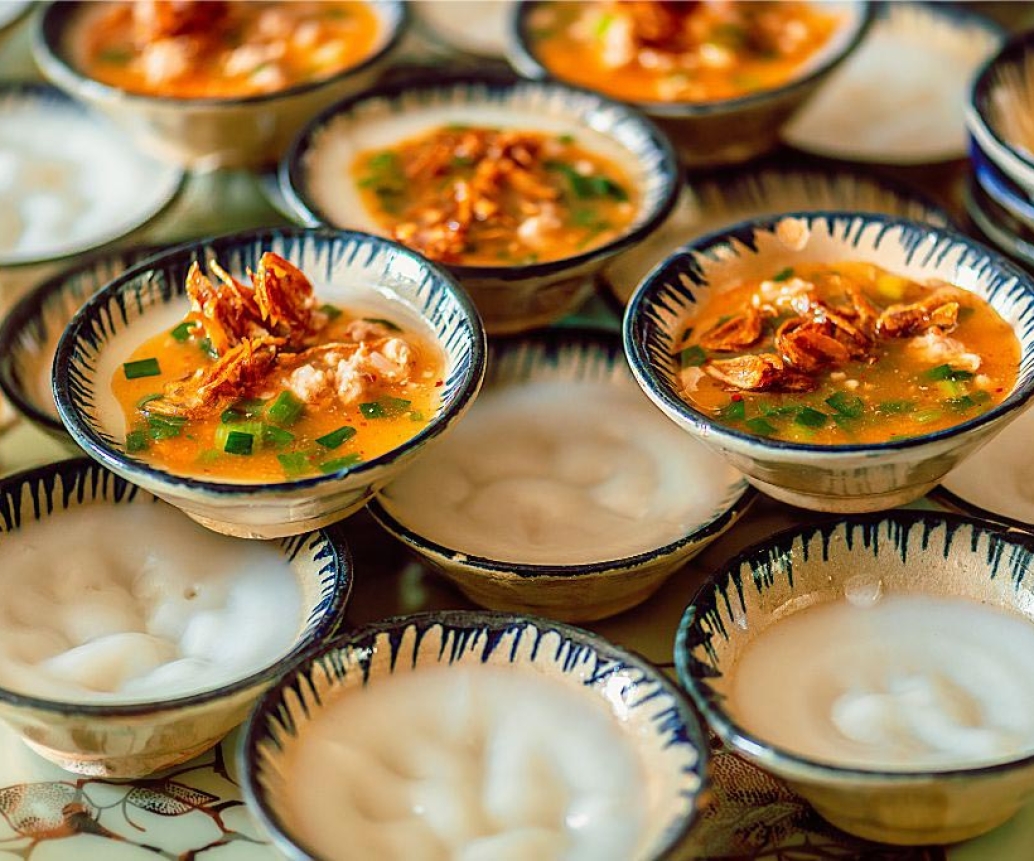
Top 6 Vietnamese Traditional Cakes Not Be Missed
Explore Vietnam's cuisine - its delectable traditional cakes! Every region on your Vietnam holiday boasts unique sweet treats, reflecting a rich tapestry of flavors. Dive into this list by Hanoi Voyages to uncover the top 6 must-try Vietnamese cakes, and tantalize your taste buds and craft an unforgettable experience in your Vietnam tour
Table of Contents
Banh Chung – The most popular Vietnamese traditional cakes
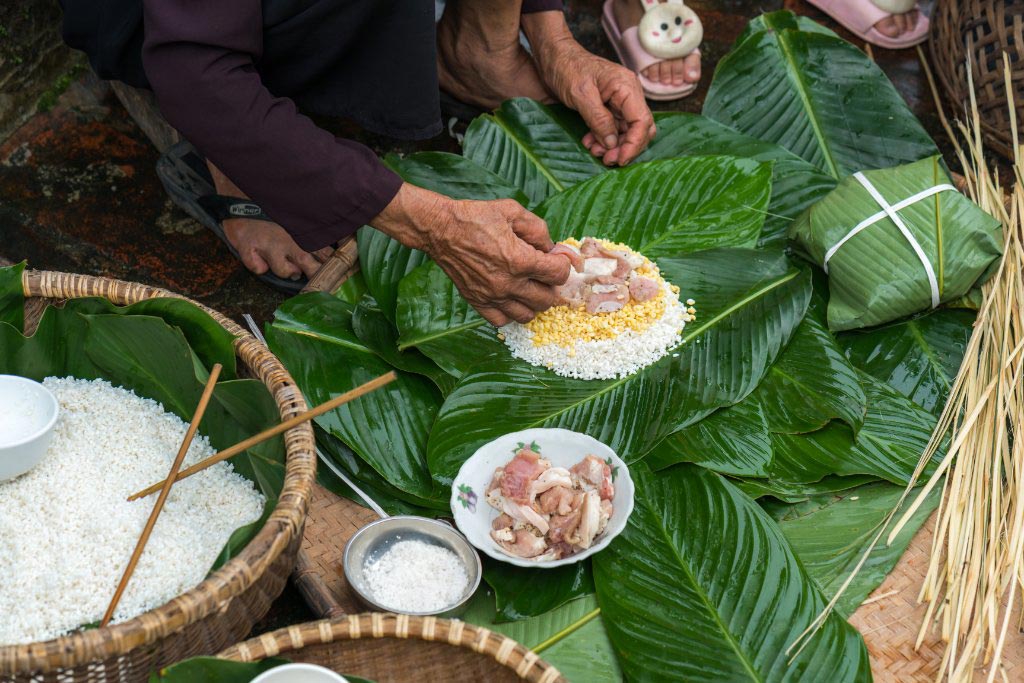
Banh Chung is a cherished Vietnamese rice cake traditionally made to celebrate the Lunar New Year, known as Tet. This square-shaped cake symbolizes prosperity, longevity, and the connection to ancestral roots.
To make Banh Chung, Vietnamese people use traditional ingredients such as glutinous rice, mung beans, and pork, Banh Chung’s unique combination of flavors symbolizes the harmonious balance of the five elements. Its green exterior represents the earth, while the hearty ingredients within represent the essence of life. Making Banh Chung involves layering rice and filling, wrapping it in banana leaves, and boiling it for hours. The result is a deliciously sticky rice cake with a rich and savory taste that captivates the essence of Vietnamese culinary artistry.
During Tet, Vietnamese families gather to make Banh Chung, fostering a sense of togetherness and passing down ancestral traditions. The process of making Banh Chung is a cherished cultural practice, bringing generations together in a celebration of heritage.
If visitors visit Vietnam during January or February, you might have a chance to experience the authentic taste of Banh Chung at local markets, and bakeries, or during family gatherings in Vietnam. Vietnamese communities who live far away from Vietnam, also celebrate Tet with this iconic dish.
Are you ready to explore the taste of Banh Chung – a taste of tradition and a symbol of good fortune?
Banh Giay – The taste of Intimacy and Connection
Banh Giay is considered one of the most popular Vietnamese traditional cakes that holds a special place in cultural celebrations, especially during Tet, the Lunar New Year. This circular, glutinous rice cake is meticulously crafted and carries profound symbolism.
The round shape of Banh Giay symbolizes the sky and the earth, embodying the harmonious unity of Yin and Yang. Vietnamese ancestors created Banh Giay with wishes to keep luck, prosperity, and the continuation of family traditions.
It can be seen that crafting Banh Giay is an art form. To make this Vietnamese traditional cake, Vietnamese people use glutinous rice which is meticulously pounded, shaped into flat discs, and then steamed. The result is a delicate, chewy texture that perfectly complements the sweet or savory fillings inside, often made with mung beans or pork.
It can be seen that crafting Banh Giay is an art form. To make this Vietnamese traditional cake, Vietnamese people use glutinous rice which is meticulously pounded, shaped into flat discs, and then steamed. The result is a delicate, chewy texture that perfectly complements the
Banh Giay offers a versatile palate experience. Whether you savor the sweetness of a red bean filling or the savory notes of seasoned pork, these rice cakes cater to a variety of taste preferences.
If visitors come to Vietnam during January or February, you might have a chance to elevate your festive occasions with the authentic taste of Banh Giay which is also perfect for family gatherings, weddings, or any special event, bringing a touch of Vietnamese tradition to your table.
Banh Khot – The Taste of The Countryside and Fields
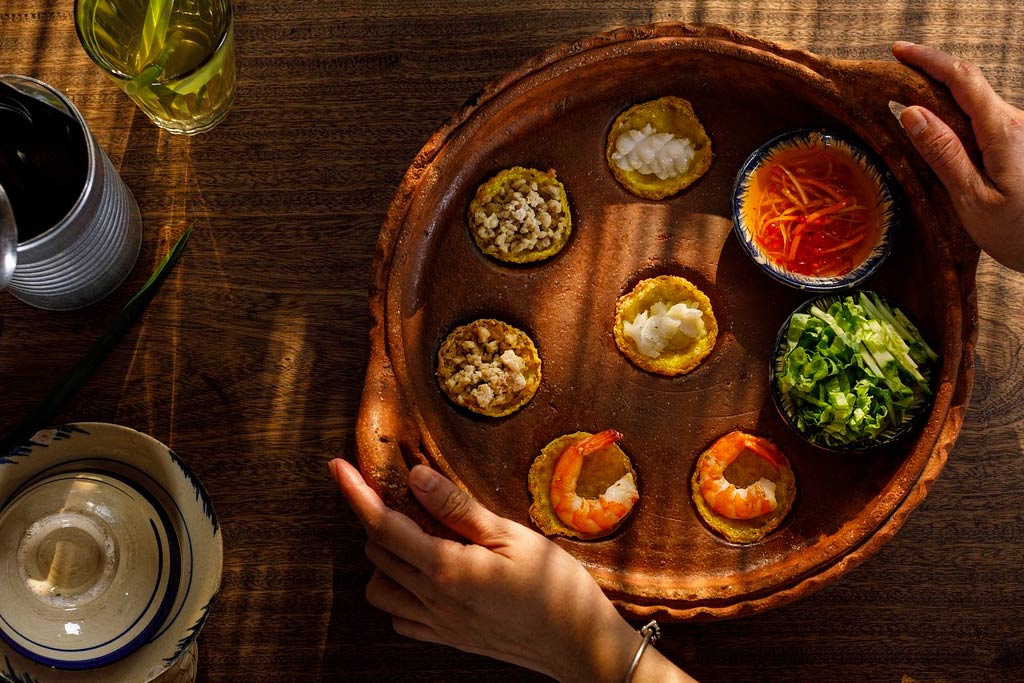
Banh Khot is a mouthwatering Vietnamese dish that hails from the southern regions. These delightful bite-sized pancakes are made with a savory batter and typically filled with shrimp, creating a perfect harmony of flavors and textures.
To make Banh Khot, Vietnamese people use the batter of rice flour, coconut milk, and turmeric which is poured into small, specially designed molds. After that, they are cooked until crispy on the edges and soft in the center. These golden mini-pancakes showcase the skillful mastery of Vietnamese cuisine.
Banh Khot is known for its succulent shrimp filling. Plump, juicy shrimp are placed on top of the batter before cooking, creating a flavorful and satisfying experience in every bite. The result is a perfect balance of crunch and tenderness.
It can be said that Banh Khot is traditionally served with fresh herbs, lettuce, and a side of dipping sauce, often containing fish sauce, lime, and chili. Wrap the pancakes in lettuce leaves, add herbs, and dip in the sauce for an explosion of flavors that dance on your palate.
Are you ready to try the taste of Banh Khot – a popular choice for social gatherings and family meals? The interactive aspect of assembling your bites makes it a fun and communal dining experience, perfect for creating lasting memories.
Banh Tet – The Taste of Intimacy and Connection
Banh Tet, a Vietnamese traditional rice cake, has its roots in ancient agricultural practices and is closely associated with the celebration of Tết Nguyên Đán, the Lunar New Year in Vietnam.
The cake symbolizes Earth with its cylindrical shape and the connection between the sky and the ground through its layers. The history of Banh Tet dates back centuries, and its ingredients, such as glutinous rice, mung beans, and pork, reflect the agricultural abundance of Vietnam. Wrapped in banana leaves, Banh Tet has regional variations, showcasing the diversity of Vietnamese culinary traditions.
The tradition of making and sharing Banh Tet during Tet continues to be a cherished cultural practice, symbolizing unity, prosperity, and enduring ties to nature and ancestors.
Over time, regional variations of Bánh Tét have emerged, with different areas of Vietnam putting their unique spin on the recipe. While the core elements remain consistent, variations in fillings and preparation methods have allowed Bánh Tét to evolve into a diverse and beloved dish across the country.
Banh Beo – The rustic dishes of Vietnamese people

Banh Beo, a Vietnamese dish, has its origins in the country’s rich culinary heritage. The name “Banh Beo,” possibly refers to the small, round shape resembling water fern leaves. The dish is believed to have originated in Hue, the ancient capital of Vietnam.
Banh Beo consists of small, steamed rice cakes topped with savory or sweet ingredients. The origin of the dish is closely tied to the imperial city of Hue, where intricate and refined cuisine flourished during the Nguyen Dynasty. The dish reflects the sophisticated tastes of the imperial court and has since become a popular street food enjoyed throughout Vietnam.
The base of Banh Beo is typically made from a batter of rice flour and tapioca starch, creating a soft and slightly chewy texture. Traditional toppings include dried shrimp, mung bean paste, crispy pork skin, and a drizzle of savory fish sauce.
Over time, regional variations of Banh Beo have emerged, adapting the dish to local preferences. Today, Banh Beo is a beloved snack and appetizer, showcasing the diversity and creativity within Vietnamese cuisine. Its popularity extends beyond the imperial city, and Banh Beo stands as a flavorful testament to the country’s culinary evolution and cultural richness.
Banh Xeo
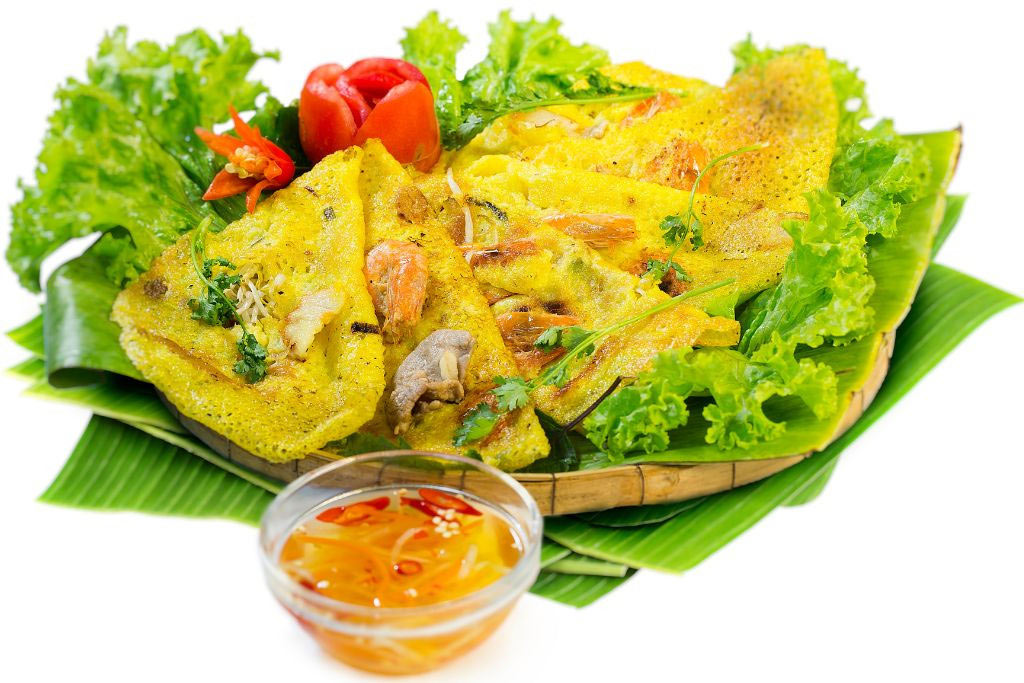
Banh Xeo is a Vietnamese dish that originated in Vietnam and has become popular both in the country and internationally. The name “Banh Xeo” translates to “sizzling cake” in English, which refers to the sound the rice batter makes when poured into a hot skillet. The dish is a type of savory Vietnamese pancake or crepe that is typically filled with a variety of ingredients.
The exact origin of bánh xèo is not well-documented, but it is believed to have originated in Central Vietnam, particularly in the region of Hue. Over time, it has become a popular dish throughout the country, with different regions having their own variations in terms of ingredients and preparation methods.
Banh Xeo is made using a batter consisting of rice flour, turmeric powder (which gives it a distinctive yellow color), coconut milk, and water. The batter is poured into a hot skillet, where it crisps up to form a thin, golden-brown pancake. Common fillings include shrimp, pork, bean sprouts, and mung beans. The pancake is usually folded in half before serving, and it is often accompanied by fresh herbs, lettuce, and a dipping sauce (“nuoc cham” in Vietnamese)
Banh Xeo is enjoyed as a popular street food in Vietnam and is also served in restaurants around the world where Vietnamese cuisine is featured. Its crispy texture, vibrant colors, and diverse flavors contribute to its widespread appeal.
Vietnam's cuisine has many delicious traditional cakes which we cannot list all in this article. Contact us soon to get more details about your upcoming trip, Hanoi Voyages wishes you have a safe and enjoyable trip!










